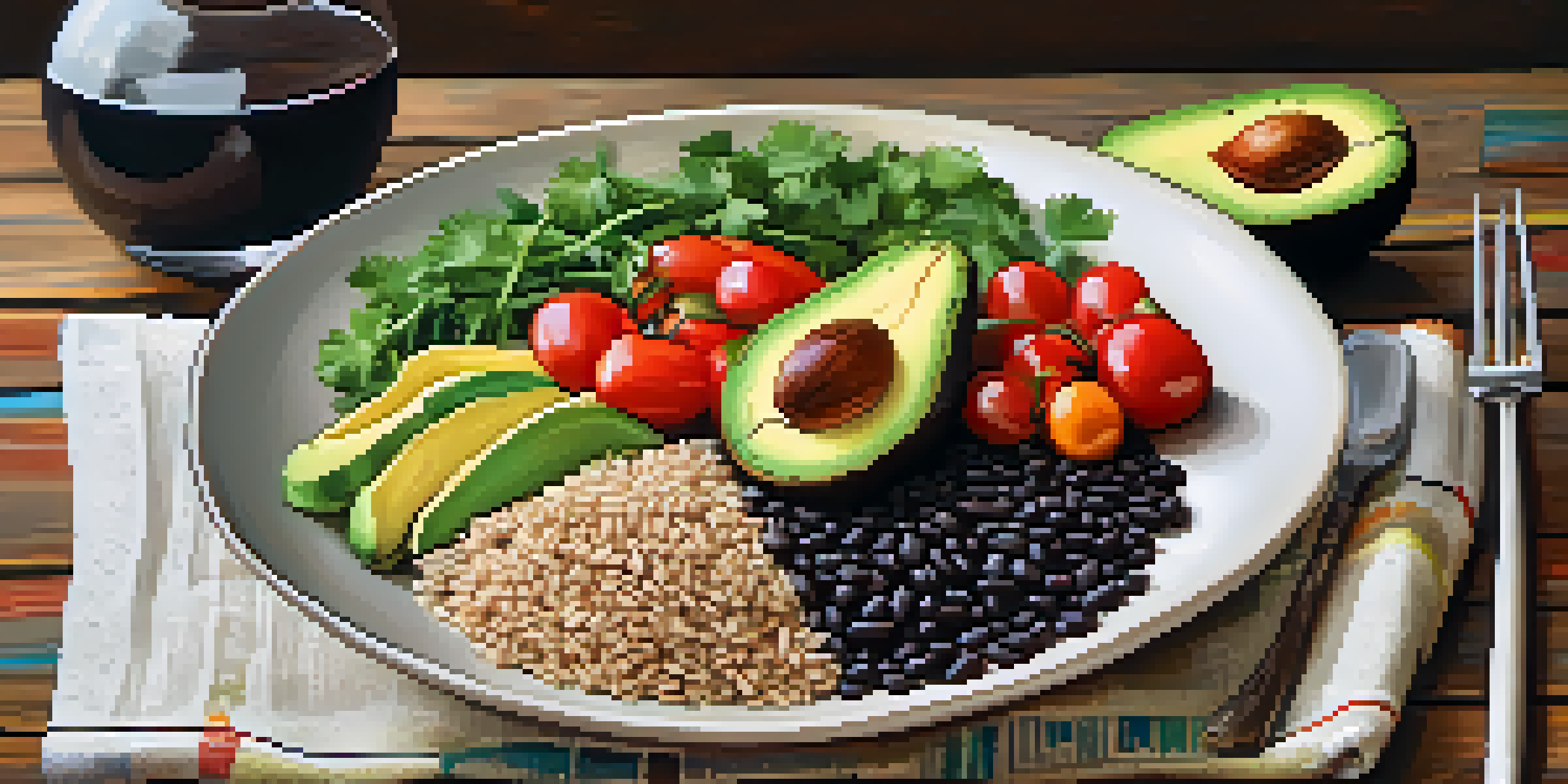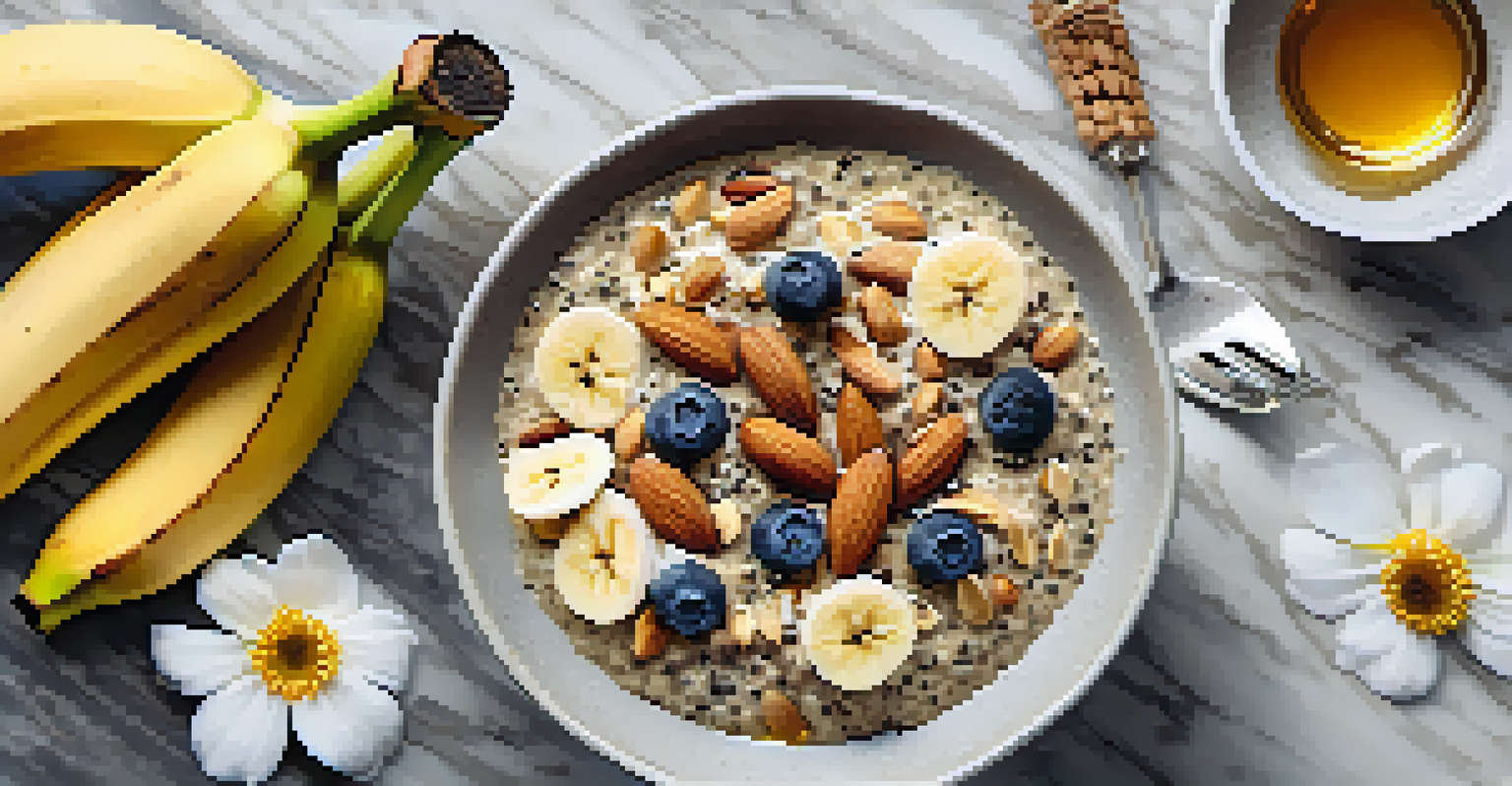Vegan Protein Pairings: Building Balanced and Tasty Plates

Understanding Vegan Protein: The Basics
Vegan protein comes from plant-based sources, which can be both nutritious and delicious. Unlike animal proteins, plant proteins often contain fiber, vitamins, and minerals that contribute to overall health. However, not all plant proteins are complete, meaning they lack one or more essential amino acids. Understanding this will help you create balanced meals that provide all the amino acids your body needs.
The food you eat can either be the safest and most powerful form of medicine or the slowest form of poison.
Essential amino acids are the building blocks of protein that our bodies cannot produce on their own. To get all these essentials, it’s important to combine different plant proteins. For instance, legumes like beans and lentils can be paired with grains like rice or quinoa to create a complete protein profile. This simple pairing strategy ensures you aren't missing out on key nutrients while still enjoying a variety of flavors.
Exploring various protein sources not only enhances your diet but also keeps your meals exciting. Some popular vegan protein sources include chickpeas, tofu, tempeh, and nuts. By learning how to mix and match these ingredients, you can create satisfying and balanced plates that are both healthy and enjoyable.
Combining Legumes and Grains for Complete Proteins
Legumes and grains are a classic combination in vegan cooking, and for good reason. When paired together, they provide a complete protein source that contains all nine essential amino acids. For example, combining black beans with brown rice not only boosts protein content but also adds fiber and other nutrients to your meal.

This pairing can be found in various cuisines around the world, such as the beloved burrito bowls or traditional rice and beans. Incorporating these combinations into your meals is simple and versatile; you can toss them in salads, create hearty stews, or serve them in wraps. The flavors are often complementary, making it easy to enjoy nutritious dishes without sacrificing taste.
Combine Proteins for Balance
Mixing legumes and grains creates complete proteins, ensuring you receive all essential amino acids in your vegan diet.
Experimenting with different legume and grain combinations can open up a world of delicious possibilities. Why not try quinoa with lentils or chickpeas with whole wheat pita? Each pairing offers unique textures and flavors, ensuring your meals remain exciting and satisfying.
Nuts and Seeds: Tiny Powerhouses of Protein
Nuts and seeds are often small but mighty when it comes to packing a protein punch. They are versatile ingredients that can enhance both the texture and nutritional value of your meals. For example, adding a sprinkle of hemp seeds to your smoothie or incorporating almonds into your salad can elevate the protein content significantly.
Let food be thy medicine and medicine be thy food.
In addition to providing protein, nuts and seeds are rich in healthy fats, which are essential for a balanced diet. These fats can help improve heart health and provide sustained energy throughout the day. Just remember, moderation is key, as they can be calorie-dense; a little goes a long way in adding both flavor and nutrition.
You can mix and match various nuts and seeds to create delicious toppings for dishes. Think chia seeds in your oatmeal or walnuts in your stir-fry. These little additions can transform a simple dish into a nutrient-dense powerhouse, making it both balanced and satisfying.
Tofu and Tempeh: Satisfying Plant-Based Proteins
Tofu and tempeh are two of the most popular protein sources in vegan diets, both derived from soybeans. Tofu is versatile and can take on various flavors, making it a great addition to stir-fries, soups, and even desserts. Tempeh, on the other hand, has a firmer texture and a nutty flavor, making it perfect for grilling or crumbling into sauces.
Both tofu and tempeh are complete proteins, meaning they provide all essential amino acids. This makes them an excellent choice for anyone looking to maintain muscle mass on a vegan diet. Plus, they are rich in calcium and iron, which are crucial for bone health and energy levels.
Nuts and Seeds Boost Nutrition
Incorporating nuts and seeds into meals not only enhances protein content but also adds healthy fats and essential nutrients.
Incorporating these soy-based proteins into your meals is easy and can elevate the overall taste and nutrition. Whether you marinate tofu before baking or sauté tempeh with spices, the possibilities are endless. Try adding them to salads, grain bowls, or even as a meat substitute in your favorite recipes.
Embracing Whole Foods for Nutritional Balance
Whole foods are the foundation of a healthy vegan diet, rich in nutrients and free from processed ingredients. This includes fruits, vegetables, whole grains, legumes, nuts, and seeds. By focusing on whole foods, you not only boost your protein intake but also enhance your overall health with vitamins and minerals that support bodily functions.
Choosing whole foods over processed options allows you to enjoy the natural flavors and textures of your ingredients. For example, a colorful vegetable stir-fry with quinoa provides not just protein but also a plethora of nutrients from the vegetables. This approach encourages you to be creative in the kitchen, experimenting with different combinations and flavors.
Moreover, whole foods are often more satisfying, helping to curb cravings and keep you full longer. By prioritizing these ingredients in your meals, you can create balanced plates that are nourishing and delicious, supporting a healthy lifestyle.
Flavor Boosters: Spices and Herbs in Vegan Cooking
Spices and herbs play a crucial role in elevating the flavors of vegan dishes, making them more enjoyable and exciting. They can transform a simple meal into a culinary adventure, introducing new tastes that complement your protein pairings. For instance, adding cumin and coriander to your chickpea salad can take it from bland to bursting with flavor.
Experimenting with different spices can also enhance the nutritional profile of your meals. Many spices, like turmeric and ginger, boast anti-inflammatory properties and other health benefits. By incorporating these into your dishes, you’re not only making them tastier but also healthier.
Plan Meals for Nutritional Success
Strategic meal planning, including batch cooking and listening to your body's needs, helps maintain a balanced and varied vegan diet.
Don’t be afraid to get creative with your spice rack! Combine herbs like basil, cilantro, or parsley with proteins and grains for a fresh, vibrant dish. This not only adds flavor but also makes your meals visually appealing, enhancing the overall dining experience.
Planning Balanced Vegan Meals: Practical Tips
When it comes to creating balanced vegan meals, planning is key. Start by choosing a protein source, such as legumes or tofu, and then pair it with whole grains and plenty of colorful vegetables. This method ensures you're covering all your nutritional bases while keeping meals varied and interesting.
Batch cooking can also be a lifesaver for busy individuals. Preparing large quantities of grains, legumes, and roasted vegetables ahead of time allows you to mix and match throughout the week. This not only saves time but also helps prevent the temptation of reaching for less healthy options when hunger strikes.

Lastly, don’t forget to listen to your body! Everyone's nutritional needs are different, so pay attention to how certain combinations make you feel. By adjusting your meals based on your own preferences and energy levels, you’ll find a balanced eating routine that works best for you.